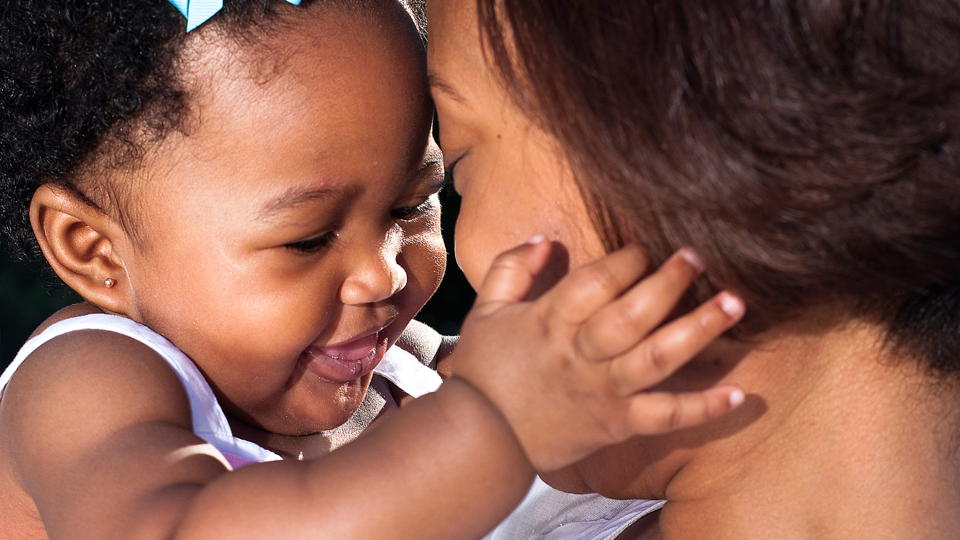I heart you

What research shows about all your hugs and kisses.
Last week, Saulie, my 2-1/2-year-old grandson, turned toward me as he floated away snuggled in his mother’s arms and said, “Bye, love.” (Melt.) Then, in what seemed like a nanosecond, he wrapped his arms around his body and moved them side-to-side, signaling a pretend hug that only 2-year-olds know how to give. (Melt. Melt.)
Hearing “Bye, love” and seeing that pretend hug was somehow a defining moment for me: I knew in that instant that I felt as loved as I ever have or would. Then, out of the blue somehow, Tina Turner’s song “What’s Love Got to Do with It” slipped into my mind.
For Turner, if you recall, love was a secondhand emotion. Maybe so for young love, but for parents and grandparents, love precedes the child’s entry into the world and, from the start, is unconditional and offered lavishly. As it turns out, research is showing us how important emotional development and social interaction are to a child’s well-being.
A healthy developmental milestone between 18 and 30 months is the ability to “create emotional ideas” (from Building Healthy Minds, by Stanley Greenspan, 2000). This means that at this age, children should be able to communicate feelings and engage in emotional interaction. As I read about this in Greenspan’s book, I thought of “Bye, love,” and of Saul’s typical jumping up and down upon the sight of me coming to pick him up, and I felt a keen sense of pride and happiness.
We parents and grandparents have a brand-new position, don’t we? We can concentrate on giving children what we know they need and want most, if not all the time: we take them to the park to play, to the zoo, for a walk down the street. And we read them stories about being loved, stories before bedtime to ease their reluctance, stories that use specific vocabulary for things they want to learn about, and stories that help them understand their emotions.
When Saul was first born, my firsthand emotion, my unconditional love and awe, evoked a smile from him sometimes, or a gurgle—certainly not love. Over time, that smile of his, I’m sure, has turned from a simple response to true love. The stuff of “Bye, love,” or that excited behavior they exhibit upon sighting us, we know full well that for these gifts—and they are gifts—love has got everything to do with it.
Booklist
Friends often ask me, “What stories do you read to Saul?” So here’s one of my booklists, including books that are great for talking about feelings.
Bedtime reluctance:
Good Night, Gorilla by Peggy Rathmann (G.P. Putnam’s Sons, 1994)
Wake Up House! Rooms Full of Poems by Dee Lillegard (Knopf, 2000)
Emotional well-being:
The Rainbow Fish by Marcus Pfister (North-South Books, 1992)
Your Personal Penguin by Sandra Boynton (Workman Publishing Company, 2006)
Vocabulary development:
Trucks Trucks Trucks by Peter Sis (Harper Festival, 2004)
Apollo by Caroline Gregoire (Kane/Miller, 2002)
Conceptual knowledge:
Animal Dads by Sneed B. Collard III (Houghton Mifflin, 1997)
Hungry for Numbers by Etienne Delessert (Creative Editions, 2006)
Sounds of language:
Brown Bear, Brown Bear, What Do You See? by Bill Martin, Jr. and Eric Carle (Henry Holt, 1967)
Dooby Dooby Moo by Doreen Cronin and Betsy Lewin (Atheneum, 2006)
Just-for-fun books that were originally songs:
BINGO, illustrated by Rosemary Wells (Scholastic, 1999)
Sing a Song of Sixpence, illustrated by Pam Adams (Child’s Play, Limited, 1998)









